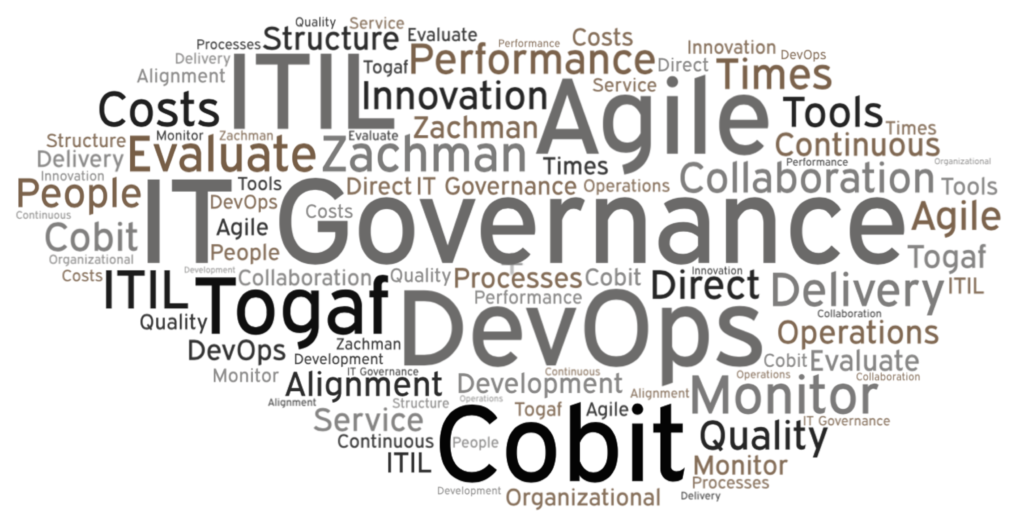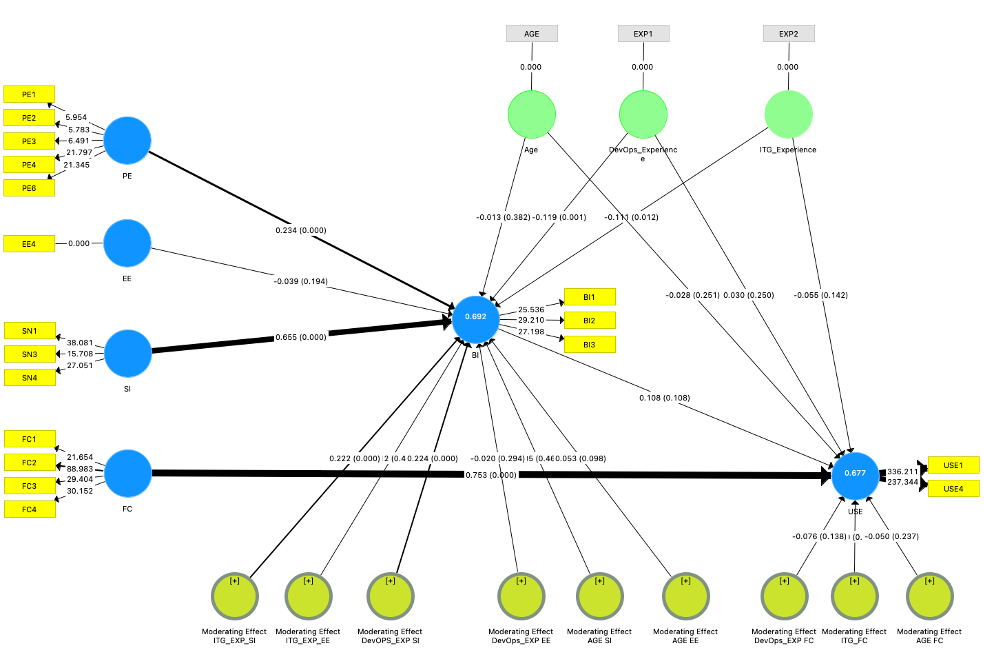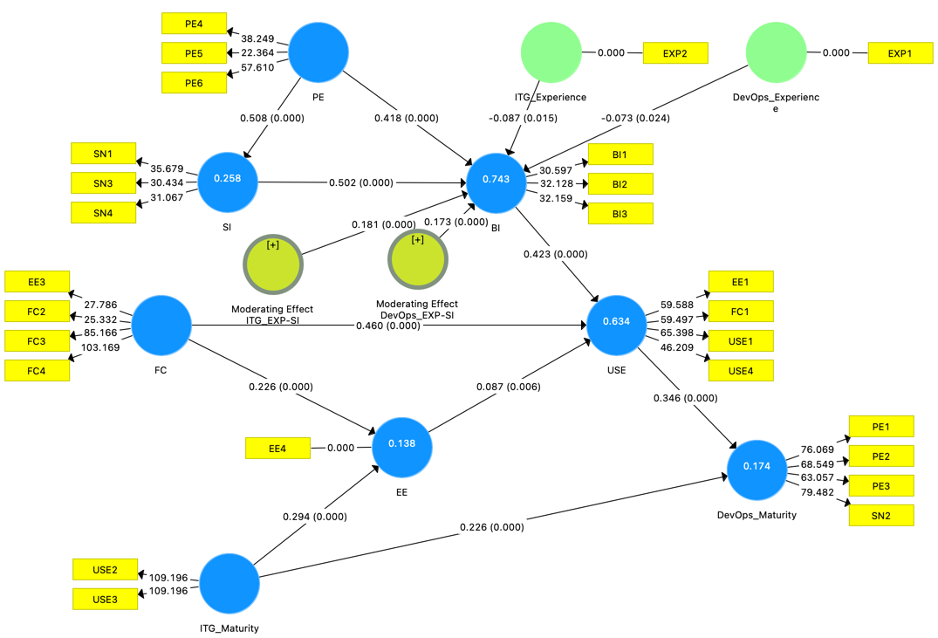
Adoption of IT governance strategies for multi-product DevOps teams
Organizational alignment, product performance expectation, and support from experienced DevOps executives, encourage key stakeholders to sponsor IT Governance (ITG) adoption. ITG maturity facilitates the adoption and utilization of ITG processes, thereby reducing effort, which results in improved DevOps maturity, reflected in better alignment, self-management, and delivery of products.
Introduction
As organizations are adopting DevOps practices within their environments, 40% of new products are estimated to fail at launch (Cooper, 2019). The failure rate of products increases with the product size, whereby only 5% of large products are considered successful based on end user value, cost, time, productivity, and technical quality (Jorgensen, 2019). The general IT problem is the lack of IT Governance (ITG) amongst DevOps teams within multi product delivery organizations, whereby some IT leaders in multi-product delivery organizations, are not aligned with the relationship between performance expectancy (PE), effort expectancy (EE), social influence (SI), and facilitating conditions (FC), as moderated by experience (EXP), age (AGE), gender (GND), voluntariness of use (VOL), with behavioral intention (BI) to adopt ITG amongst DevOps teams.
Smith et al. (2021), identified only 26% of organizations as having an elite grade DevOps posture in the latest state of DevOps survey. Elite DevOps organizations are distinguished by on-demand deployments, less than 1 hour for changes and restore and under 15% of failure rates. The fact that most organizations do not fit in this category, denotes that product delivery is not in its optimal state and hence required formalized governance mechanisms. Such mechanisms are supported by key organizational stakeholders and advocated by experienced DevOps leaders.
Participants and data collection method
The participants in this study consisted of IT leaders with experience in adopting ITG for multiproduct DevOps teams. The IT leaders in this quantitative survey were recruited from LinkedIn groups related to ITG, DevOps, COBIT, ITIL, and EA. Each participant needed to have a leadership position in multiproduct DevOps teams, such as CIOs, Team Leads, IT Managers and DevOps/Software architects. These roles are critical in the adoption and use of ITG.
The survey was posted on various LinkedIn groups and in this site. The survey collected a total of 489 respondents. The respondents who qualified for the study were filtered by the initial 3 questions in the survey. These questions ensured that the participants are IT leaders, aged over 18 years, managing DevOps teams in a multiproduct environment through an ITG framework. Upon filtering on these qualifying questions, the total number of actual respondents reduced to 266, thus denoting a 55% completion rate. After reviewing the data in MS Excel, respondents who did not fully answer the survey were excluded. This resulted in a final population of 205 respondents.
The data collected in this study was analyzed by means of three software tools, specifically Microsoft Excel, SPSS and SmartPLS. Microsoft Excel is a spreadsheet software which was used for data cleaning purposes. SPSS is a statistical tool developed by IBM Corporation that is extensively used by researchers perform comparison and correlational statistical tests in the context of univariate, bivariate, and multivariate analysis using both parametric and non-parametric statistical approaches.
Findings
The findings of this study demonstrated that performance expectancy, especially from external actors, positively affect the behavioral intention of DevOps leaders towards the adoption of ITG. Therefore, DevOps leaders need to clearly understand the DevOps teams’ ability to align with (a) other IT teams and (b) other business departments. Furthermore, DevOps leaders need to understand the organization’s expectations and KPIs in measuring DevOps contribution towards the product delivery. Influential people in the organization advocate for ITG adoption with DevOps leaders, especially when the expected performance is not met. Such expectations arise from 3 key areas, specifically:
- Lack of alignment between DevOps teams and other IT teams
- Lack of alignment between DevOps teams and other business departments
- DevOps teams are not delivering end products, as per expectations

Organizations having access to ITG resources, including training and specialized ITG roles, facilitate the use of ITG. Such conditions result in IT leaders finding it easy to adopt and participate in an IT governance framework.The facilitating conditions, allow DevOps leaders to minimize the effort towards the adoption and use of IT governance. This means that DevOps leaders having supporting resources may be able to adopt an ITG framework faster thanks to better advocation. However, such improvements may not translate in faster adoption or reduced ITG-process changes (ITG maturity). On the other hand, experienced DevOps leaders may understand the need to change specific ITG processes faster and proceed to a more mature ITG framework with the end goal to improve DevOps capabilities.

Influence outside of DevOps teams positively influences the behavioral intention of DevOps leaders towards the adoption of ITG. Such influence originates from technical and non-technical leaders within the organization who expect specific performance from DevOps teams. To this end, DevOps leaders need to determine these key influencers and ensure that expectations are met. Experienced DevOps leaders understand the capabilities of such teams in terms of self-management, automation, and deployment reliability. On the other hand, external stakeholders flag concerns to DevOps leaders when product delivery and DevOps alignment concerns arise. When these qualitative and quantitative KPIs are not as per expectations, DevOps leaders advocate towards the adoption of ITG.
Additionally, ITG-certified DevOps leaders advocate for ITG adoption based on external influence (SI) to boost DevOps productivity and alignment with business objectives. As DevOps leaders dedicate effort addressing the goals of ITG adoption, the participation and use of ITG results in beneficial outcomes, both for the DevOps teams and the organization. DevOps leaders who have a core role in an ITG framework (USE1) and consistently participate (USE4), and potentially improve ITG processes, experience benefits, specifically:
- clear and understandable role to adopt and collaborate in an IT governance framework
- access to necessary resources to adopt and collaborate in an IT governance framework
Immature DevOps teams, consider ITG frameworks to accomplish tasks more quickly, thus increasing the productivity of DevOps teams. To this end, DevOps engineers themselves may advocate for the adoption of ITG practices. In such environmental conditions (low DevOps maturity), the adoption and use of an ITG framework, allows IT leaders to improve their DevOps teams capabilities through formalized management structures, such as deployment windows, communication cadences, architectural designs, knowledge sharing, and service management. As DevOps teams familiarize and improve their internal practices through ITG mechanism, the maturity of said teams is likely to improve. Release management is one of the most prominent ITG mechanism adopted by DevOps teams, due to low confidence in the deployments. DevOps leaders need to prioritize QA and integration (CI) practices towards a continuous deployment status. It takes years of technical and human dedication, as well as a homogenized culture where testing is a vital component in every step of product development and delivery, to achieve excellent practices in the above-mentioned areas.
The findings of this study determined that most DevOps teams utilize ad-hoc ITG frameworks. This means that DevOps teams undergo multiple ITG iterations until they achieve a suitable ITG framework which can be utilized towards improve capabilities. Such ITG changes allows DevOps teams to improve the effort to participate in an ITG framework and permit them to achieve their capabilities with reduced efforts over previous iterations. As DevOps leaders engage in continuous improvement within the adopted ITG framework, the maturity of DevOps teams is positively affected. DevOps maturity is elevated when ITG mechanisms undergo iterations for improvement. Similarly, experienced DevOps leaders utilize ITG mechanisms to improve DevOps maturity through formalized processes thus ensuring support from key stakeholders and effective monitoring and transparency.
Recommendations for action
Based on the findings of this study, the adoption of ITG is contingent on influencers, facilitators, and key performance indicators. Influencers in the adoption of ITG, comprise attitude, structure, and alignment of DevOps teams vis-à-vis technical and non-technical teams.
Early adoption of ITG mechanisms, mature DevOps-oriented ITG mechanisms, and employing experienced ITG and DevOps professionals are key facilitators towards ITG adoption. The suitability of adopted ITG mechanisms, and DevOps maturity, are determined by key performance indicators. The number of rollbacks on production environments, recovery times, and lead time to provide new products or updates are examples of such KPIs.
References
Cooper, R. G. (2019). The drivers of success in new-product development. Industrial Marketing Management, 76, 36–47. https://doi.org/10.1016/j.indmarman.2018.07.005
Jorgensen, M. (2019). Relationships between project size, agile practices, and successful software development: Results and analysis. IEEE Software, 36(2), 39–43. https://doi.org/10.1109/ms.2018.2884863
Smith, D., Villalba, D., Irvine, M., Stanke, D., & Harvey, N. (2021). Accelerate state of DevOps 2021. Google. https://services.google.com/fh/files/misc/state-of-devops-2021.pdf